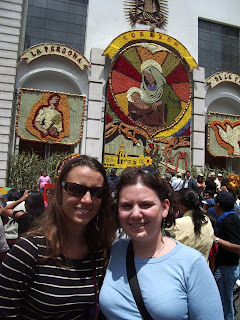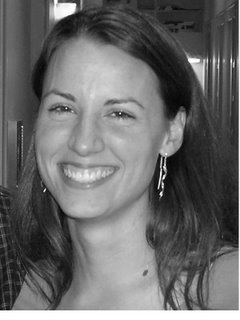"I recently spent two weeks building homes in Ecuador with Habitat For Humanity. We were a pickup team, a group of 14 volunteers from the USA, Canada and Australia, ranging in age from teenagers, to youngsters fresh out of college to those of us of in our 50s.
We met in Quito, the capital of Ecuador, a beautiful old colonial city of 1.5 million people. Though it lies 15 miles south of the equator, Quito is at 9,200 feet, giving it a cool and rainy climate quite similar to Berkeley in winter. After a one-day orientation and team get-together there, we flew down the western slope of the Andes to Puerto Viejo. At sea level, Puerto Viejo is hot and steamy. From there, we drove one hour into the jungle to Tosagua, a small farming community.


If the Inuit people have 100 words for snow, the Tosaguans must have 200 for mud. Set on a flood plain and lacking municipal drainage, the town is a sea of
mud and standing water in the rainy season.

To accommodate the annual flooding, many of the houses are built of bamboo and raised on stilts. The open space beneath such homes provides a shaded area for washing clothes, keeping chickens, lounging in hammocks, etc.
Our team worked on two homes. Built to a standard plan, each measures six meters by six meters (a little less than 400 square feet, or slightly smaller than a two-car garage) and includes two bedrooms, a living/dining room, a bathroom and a kitchen. The exterior walls are built of concrete block, the interior walls of lighter clay brick. The floors and foundation are concrete, the roofs are corrugated steel. The walls and columns are reinforced with steel rods for seismic safety.
We turned the first shovel of dirt on the first day of work at the first home, completing the foundation in our two weeks. (Another team was scheduled to fly in
a week later to finish the job.) We erected the exterior and interior walls at the second home. At both homes we worked with the owners and local maestros, or master craftsmen. The work was grueling.
Digging trenches, mixing and hauling concrete, bending rebar, and shoveling gravel beneath the equatorial sun is brutal. We laughed every morning at breakfast that this was the first vacation we’d been on where we hoped for cloudy weather. (Bob appears on the far right).

The Habitat For Humanity program enables people to own their own homes. Details vary by locale, but the basic plan is that the families acquire a plot of land and save up a down payment. After carefully screening applicants, the local Habitat office lends them the money at zero interest to build their home. The mortgage payments are reinvested in the program,enabling more homes to be built. It’s a helping hand deal, not a handout.
Families must provide sweat equity, which they did in spades in Tosagua. I worked with a delightful couple,Freddy and Tanya, and her brother Oracio on the second
home.

They are a gracious, loving and hardworking family. Though the average Ecuadorian is maybe 5’2” and 120 pounds, they’re built like iron. Whenever I’d get pooped out hauling cement or bricks, I’d take off my sweat-soaked hat, point to my thinning gray hair and explain, “Soy viejo!” (I’m old!) But it was all in good fun and spirits.
The families treated us very well. Señora Leticia, for whom we started the first home, and her family fed us a delicious crab dinner one night after work.

And both families threw a big fiesta for us on our final evening. I came home with a few blisters, some aches and pains but many new friends. I hope to do it again.
It was one great adventure for body and soul."

.JPG)
.JPG)
.JPG)
.JPG)
.JPG)
.JPG)
.JPG)
.JPG)
.JPG)
.JPG)
.JPG)
.JPG)
.JPG)
.JPG)
.JPG)
.JPG)
.JPG)
.JPG)
.JPG)

.JPG)
.JPG)
.JPG)

.JPG)

.JPG)
.JPG)
.JPG)
.JPG)
.JPG)


.JPG)

.JPG)
.JPG)
.JPG)
.JPG)
.JPG)
.JPG)
.JPG)
.JPG)
.JPG)
